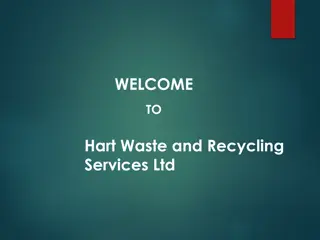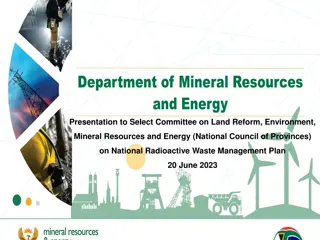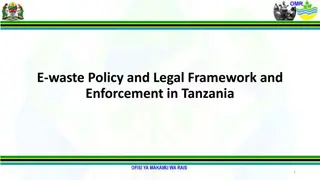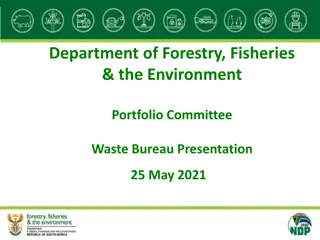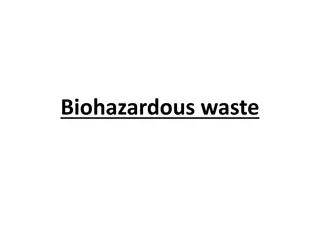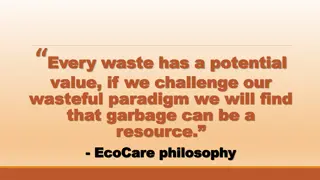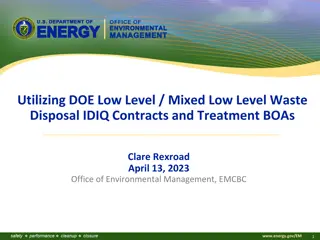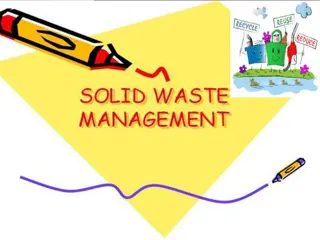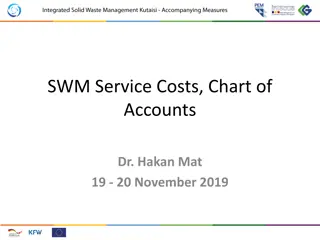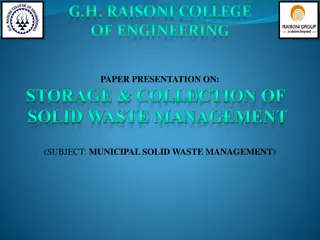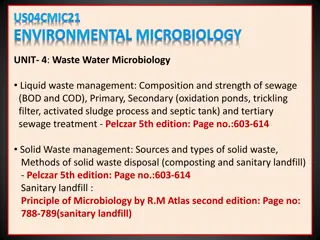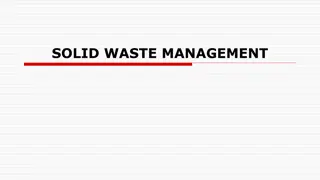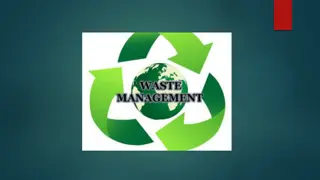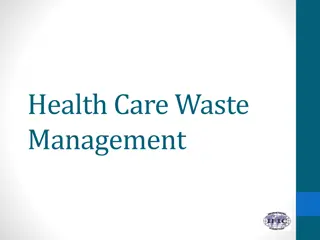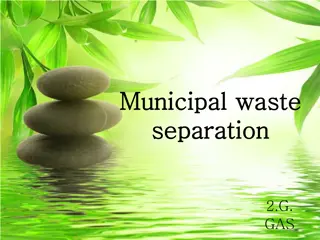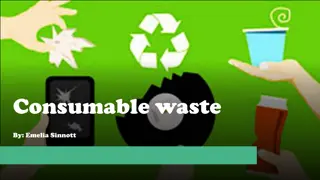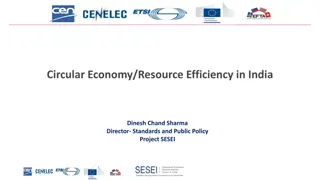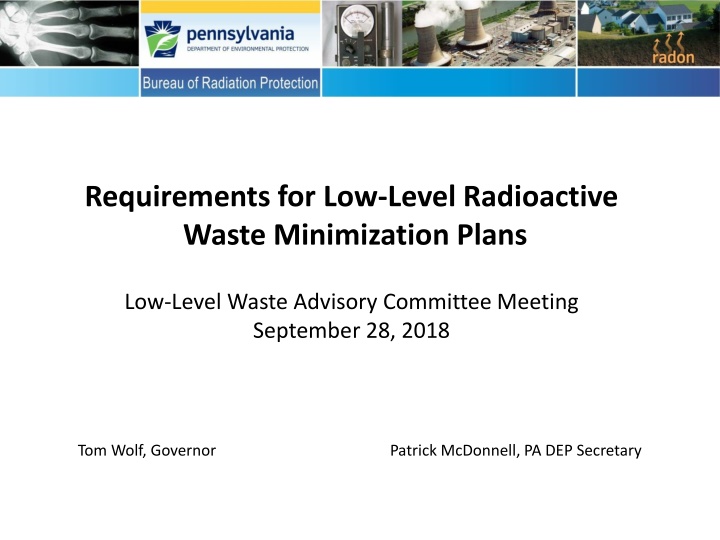
Radioactive Waste Minimization Plans and Regulations Overview
Learn about the requirements for low-level radioactive waste minimization plans as discussed in the Low-Level Waste Advisory Committee meeting. Understand the purpose of waste minimization documents, statutory authorities, key issues in waste minimization programs, definitions related to toxicity reduction, and priorities in waste management. Explore exemptions for small generators under the regulatory framework.
Download Presentation

Please find below an Image/Link to download the presentation.
The content on the website is provided AS IS for your information and personal use only. It may not be sold, licensed, or shared on other websites without obtaining consent from the author. If you encounter any issues during the download, it is possible that the publisher has removed the file from their server.
You are allowed to download the files provided on this website for personal or commercial use, subject to the condition that they are used lawfully. All files are the property of their respective owners.
The content on the website is provided AS IS for your information and personal use only. It may not be sold, licensed, or shared on other websites without obtaining consent from the author.
E N D
Presentation Transcript
Requirements for Low-Level Radioactive Waste Minimization Plans Low-Level Waste Advisory Committee Meeting September 28, 2018 Tom Wolf, Governor Patrick McDonnell, PA DEP Secretary
Purpose of Waste Minimization Document It establishes guidelines and criteria for future rulemaking. It provides LLRW generators with advanced notice of DEP s intended approach for regulating waste minimization (WM) programs. It emphasizes and promotes source reduction as well as volume reduction. 2
Statutory Authority Statutory authority for WM regulations established under: Section 301 (Act 1988-12) Power and Duties of the Department of Environmental Protection Section 310 (Act 1988-12) Permitting of Generators, Brokers and Carriers Article 2, Section B (Act 1985-120) Power and Duties of the Appalachian Compact Commission 3
WM Program Review of Key Issues WM Priorities Small Generator Exemptions WM Plan Requirements WM Plan Review WM Plan Changes Program Implementation Oversight and Inspections 4
Definitions Act 1988-12, Section 310 (Permitting of Generators) requires that each generator develop a plan for reduction of toxicity and volume with stated reduction goals. Toxicity The physical and chemical form and radiological properties of a radionuclide, that makes it available to interact, directly or indirectly with the human body Toxicity Reduction Waste avoidance, recycling or the treatment of waste to lessen its availability to interact, directly and indirectly, with the human body 5
WM Priorities Part 61 Priority emphasizes waste avoidance Source Reduction Recycle Treatment Disposal Toxicity vs. volume reduction In situations where toxicity and volume reduction are mutually exclusive, preference should be given to toxicity reduction. 6
Small Generator Exemptions? Part 61 Act 1988-12 is silent on exempting small generators from submitting waste minimization plans. Case-by-case considerations for special exemptions such as One-time generators Tiered approach Waste generation activities will define effort required to waste minimization plans. 7
WM Plan Requirements Format and content requirements assure commitment to waste avoidance Management commitment and support Current situation and waste minimization opportunities Waste minimization goals Training Assessment Generators should provide justifications involving ALARA and economic considerations. 8
WM Plan Review PA DEP will review WM plans for completeness. The review will consider generators discussions of: Historic and planned WM efforts for its license activities Anticipated product, process, or service changes that may affect waste generation activities Justifications involving ALARA and economic considerations Compliance with other regulations or regulatory guides that affect WM plan decision making Generator s WM plan will be reviewed against WM for similar generator types to assess the reasonableness of the WM goals 9
WM Plan Changes The occurrence of certain events may create a need to amend the waste minimization plan Administration (e.g., consistent with permit renewals for disposal site access) New practices or technologies show opportunity for significant reduction in LLRW requiring disposal Assessments indicate trends different than expected 10
Oversight and Inspections PA DEP oversight activities Monitoring waste minimization progress through analysis and waste generation reports Inspection at generator facilities Oversight activities may require coordination with: Appalachian Compact Commission Party States Regulatory Agencies 11
Program Implementation Current Policy WM rulemaking process will be commensurate with opening of the regional LLRW disposal facility. LLRW generators are encouraged to use PA DEP s guidance document for designing and implementing voluntary WM programs. Link to PA DEP Technical Guidance Documents: http://www.depgreenport.state.pa.us/elibrary/GetFolder?FolderID=4639 12
Questions? Rich Janati, M.S. Chief, Division of Nuclear Safety Administrator, Appalachian Compact Commission Phone: 717.787.2163 rjanati@pa.gov 13

